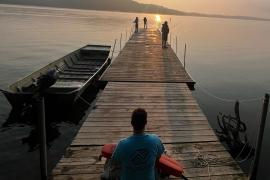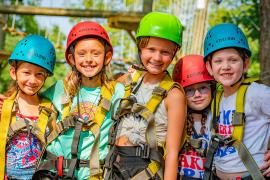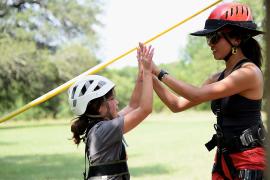Because of COVID-19, summer 2020 was unique, with many camps canceling or adjusting occupancy for their programs. Unfortunately, it looks like this pandemic is here to stay for a while, so camps need to maintain safety measures for programs and events in 2021.
A COVID-19 outbreak among campers and staff members poses a threat to community health and could potentially shut down your camp. You can avoid these issues by implementing health and safety practices. The Centers for Disease Control and Prevention (CDC), Field Guide for Camps, and other sources share information about safely running day activities and overnight camps.
Camper and Staff Health Screening During COVID-19
Health screenings protect both campers and staff from the spread of this virus. With the right health screening system, you can easily monitor the group for risk factors and symptoms.
These health screenings help you identify who might have the virus. If someone has symptoms, they should stay home. Not only is screening necessary when each person arrives at camp, but it’s also essential to continue regular health checks throughout the duration of the camp.
How to Conduct Health Screenings for Staff and Campers
What are the best practices for conducting health screenings for staff and campers? The following two-step process is an efficient way to manage these screenings. First, require each person to fill out a questionnaire when they arrive at the camp. Second, conduct temperature checks onsite. It may be helpful to outline this process during camper registration.
There are two options for health screening forms:
-
In-person COVID screening. One option is to provide a printed symptoms questionnaire to each staff member and camper. Have each person complete the form immediately upon arrival. For best results, individuals should fill out the form and hand in their responses before entering any buildings or cabins.
-
Digital COVID questionnaire. Camp check-in is one of the busiest times of the week, which is why you should minimize the additional requirements on the first day. Instead of providing printed questionnaires, consider using a digital form that campers and staff can fill out before arrival. You can use an online COVID health screening form.
In addition to the initial screening for COVID symptoms, every person should undergo a temperature check upon arrival. Conduct these temperature checks regularly. For example, consider doing a temperature check each morning or before campers eat lunch.
Camp administrators find that digital forms offer a streamlined method of gathering information. And JotForm Tables makes it easy for summer camps to manage, track, and organize form submissions. Additionally, digital screening questionnaires are more convenient for staff members and campers. These forms are accessible on any device, including a laptop, smartphone, or tablet.
Questions for Camper Health Screening Forms
Consider including the following relevant information on your digital camp screening forms.
-
Camper information, such as name, guardian/parent info, and phone number
-
Are you currently experiencing any symptoms or signs of COVID-19? Check all that apply:
-
Sore throat
-
Cough
-
Loss of smell or taste
-
Fever
-
Fatigue
-
Headache
-
Diarrhea
-
Nausea
-
Congestion
-
-
Does anyone you live with have any of the symptoms listed above?
-
Are you or anyone you live with waiting for COVID-19 test results?
-
In the past two weeks, have you come into contact with someone who has COVID-19?
-
Have you recently traveled to high-risk areas?
Other Recommendations to Keep Staff and Campers Healthy
Besides camp screenings, additional health and safety measures can minimize the risk of spreading COVID-19, including:
-
Communicating with staff and campers. You should send family, campers, and staff members clear information about safety protocols and health screenings. Not only should these communications share your expectations for health practices, but they should also give people peace of mind that your camp is a safe environment.
-
Staying home when needed. Provide guidelines so people know when they should stay home. For example, people who have symptoms or who have been in contact with a person who has COVID-19 shouldn’t participate in camp activities.
-
Washing hands regularly. Ask all campers and staff members to be diligent about hand hygiene. Provide handwashing stations with soap and water, as well as easy access to hand sanitizer.
-
Following other health department recommendations. Ask all participants and staff members to follow recommendations from the CDC and local health departments regarding mask wearing, social distancing, and respiratory etiquette.
-
Holding virtual camp activities. Consider holding a portion of the camp experience online. Instead of a multiday, in-person event, you might host certain activities via video conference before the campers come for the in-person gathering.
You can provide staff members and campers with an enjoyable, safe experience during this pandemic. With the right tools and health screening practices, you can continue these activities in 2021 and beyond.
Photo by Tsunami Green on Unsplash
Periodically, the American Camp Association (ACA) makes timely and relevant information about products and services available to its members so they can make informed decisions for their camps. However, the ACA does not endorse products, services, or companies.
The views and opinions expressed by contributors are their own and do not necessarily reflect the views of the American Camp Association or ACA employees.




